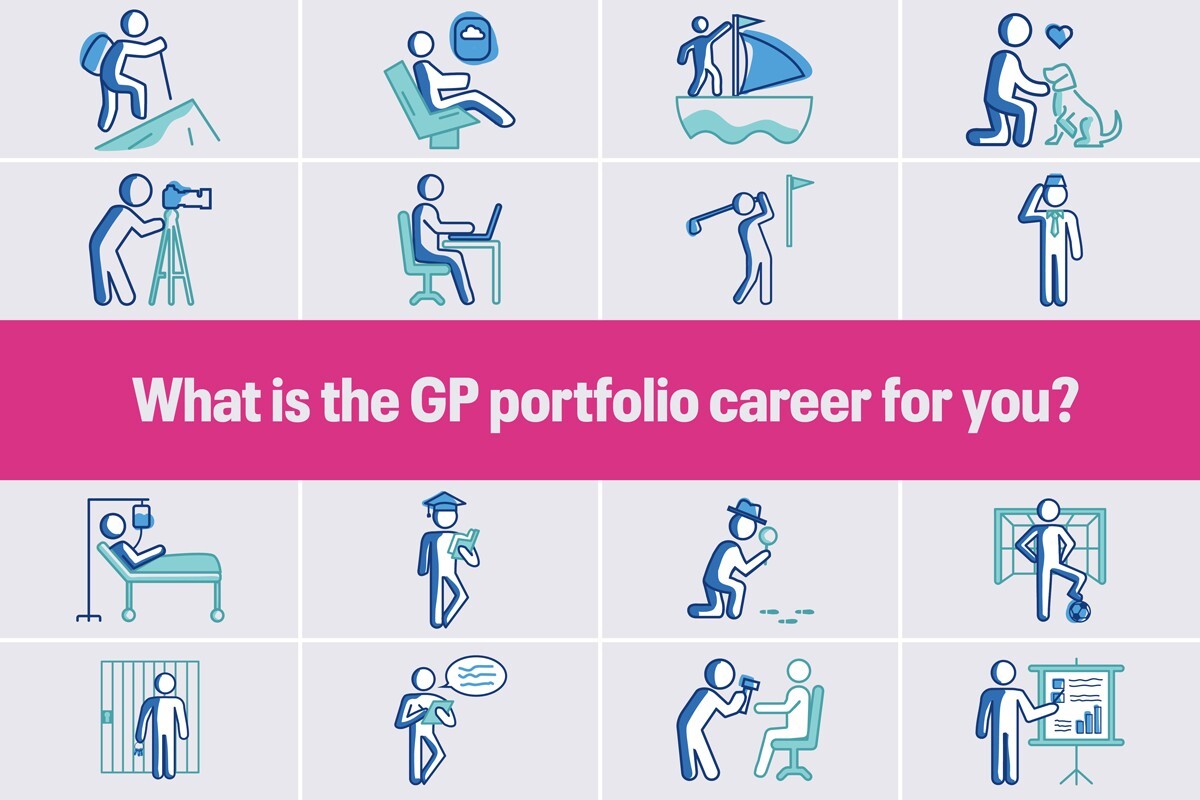Ten ways medicine will change by 2050
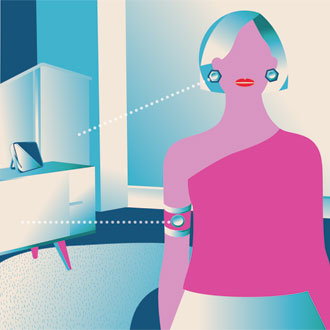
1 Wearable and implanted technology will become the norm
![]()
By 2050, new and more sensitive monitoring devices, some wearable, some implanted and some built into the home will be continuously measuring physiological and biochemical parameters, observing behaviours and tracking location.
Wearables of 2015, such as Fitbit and Jawbone, will gradually shrink and disappear into the clothing, smartphones and watches of tomorrow. They will require no conscious input from the patient. Sophisticated algorithms will tailor responses to individual patients based on continuous machine-learning processes, reminding them to take medicines and alerting patients when necessary, nudging them to activity and healthier diet, and encouraging positive thinking.
All of these sensors and devices will be networked, which raises the real possibility of software viruses and malware causing physical disease and illness. So, a visit to your GP in 2050, whether virtual or real, is likely to require the attentions of software and hardware clinicians to address any glitches and update your anti-virus software – a digital immunisation.
2 Artificial intelligence will analyse test results
By the time a patient visits their GP in 2050, they will already have provided a wealth of health and wellness data effortlessly through their normal daily activities.
In addition to this, when everything is connected (the so-called ‘internet of things’), patterns and trends that were previously invisible will become subject to analysis by artificial intelligences, turning what might otherwise be a torrent of raw data into a thin beam of highly personalised knowledge.
But the amount of data delivered by almost universal sensor coverage of patients and their environment, combined with genome and microbiome information, will increase beyond any human’s capacity to make sense of it.
The early machine intelligence in the clinical systems of 2015 will follow the lead of IBM’s Watson1, and bring the sum of biomedical research and population data to inform decision-making when required.
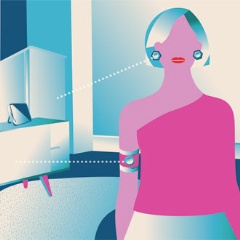
3 Patients will have full electronic access to all their health records
By 2050, the data revolution we have long been promised in healthcare will be well established. All sectors of the NHS will be fully computerised, with data linkage allowing the creation of person-based electronic health records that include all aspects of healthcare.
Patients will have full access to their medical records and many will have ‘expert systems’ that use data from their medical records to support them to lead healthy lifestyles and manage their long-term conditions.
Computerised decision-support systems will help ensure that patients receive the most appropriate tailored care. But information governance procedures must keep pace with technology to ensure this open access is not abused – for instance, with unique identification chips placed under the skin of patients to ensure that they alone are able to access their records.
4 Teleconsultations will be the first port of call
Face-to-face consultation with a GP will remain the gold standard, but patients will also be able to video-consult from their own home or workplace using a range of technologies, from Smart TVs and mobile phones to virtual reality.
In Aberdeen, researchers are already using Skype conferencing and remote ultrasound to work with oil rigs that do not have onsite clinical support.2 They are streaming signals from handheld ultrasound devices on the rigs to computers at the hospital so specialists can decide whether to transport someone off the rig for treatment.
This type of remote triage will become commonplace. We will also see ‘augmented reality’, where computer graphics appear within the real world, as demonstrated by Microsoft’s HoloLens system,3 so patients can review diagnostic results wherever they are.
5 GPs will be replaced by avatars
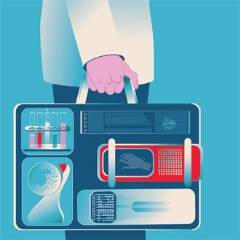
Developments in artificial intelligence, synthetic speech and animation will see the creation of GP avatars. The appearance and sound of the avatar interface will be almost indistinguishable from a human except that it will never seem flustered or impatient, but more like a good, capable friend. Only when the machine-led interventions fail will GPs be called. They too will consult virtually – at least initially – but will need to be physically present when necessary. Advances in haptics – tactile feedback technology – and robotics will potentially allow GPs to conduct a physical examination at a distance and the practice nurse to provide care remotely.
Hospitals will be only for the most desperately ill.
6 GPs carry around portable miniature laboratories
Home visits will still be a GP’s responsibility, but in 2050 the doctor’s bag will incorporate a miniature portable laboratory that can take immediate measurements of a range of disease and physiological markers, such as basic haematology, biochemistry and immunology tests.
This will provide helpful diagnostic data and information about disease severity, to improve the safety of care decisions for acutely ill people. In particular, this will benefit elderly patients, who are usually better off being cared for in their home environment, avoiding the distress of an unnecessary attendance at the local hospital assessment unit.
There will be a massive increase in the use of ultrasound to diagnose and visualise disease. This will pick up the differences between bone, fluid and air, making it suitable for a lot of diagnostic work including decision-making in stroke thrombolysis. There will be handheld ultrasound devices that GPs can hang around their necks instead of a stethoscope.
With melanoma already the fifth most common cancer in the UK at the moment, a dermatoscope will also become a commonplace piece of kit for every GP. To help the GP to interpret images of skin lesions safely and to streamline record-keeping, the dermatoscope will save images directly to the patient record. It will also enable the GP easily to send an image for a specialist opinion from a dermatologist. Software will analyse the images and score the risk of malignancy, to help the GP and patient decide together on the best course of action.
7 Diagnosis will be done by computer
Clinicians will become increasingly reliant on computer decision-support tools to diagnose. Such tools will evolve far beyond their current simplistic nature (for example, NHS 111), allowing for interaction between multiple clinical conditions, and factoring complex genomic and proteomic data into risk stratification and therapeutic decision-making. Framingham will be a distant memory.
General practice in 2050
How might general practice look in 2050?
What will the GP surgery of 2050 look like?
Through the K Hole’s 2050 predictions: A dystopian future
Dr Peter Swinyard’s 2050 predictions: Body scanners, and patients’ permits to be ill
Tim Kelsey’s 2050 predictions: The NHS will still rely on GPs
8 Genomic treatment will revolutionise patient care
Genomics will rapidly gain traction in mainstream medicine and by 2050 whole-genome sequencing to identify disease-causing genes and risk-profiling will be universally available at very low cost, quite possibly being done at birth or as part of a prenatal screen.
Every surgery will have a genome reader, able to read a person’s genetic make-up in five minutes. Under strict ethical and privacy conditions, sections of the patient’s genetic code will be checked for identified markers. This will enable the GP to determine how effective a medicine will be for that individual and what side-effects are likely to be experienced, enabling the dose to be adjusted or an alternative chosen.
The genome reader will also enable the GP to play a role in case-finding genetic disease, supporting the patient in making decisions as to whether to undergo a genetic test, and counselling the patient and their family about the implications of any findings. Most of the decision-making and interpretation will be computerised but there will be significant challenges for GPs in helping patients understand their disease risks. General practice will also need to find ways of dealing with a range of ethical and societal issues, for instance risk-profiling children for adult-onset genetic conditions, inadvertent disclosure of non-paternity, and employment and insurance discrimination.
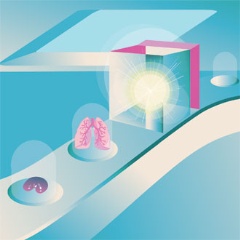
9 Drug dosing will be fully automated
Our aging, increasingly multimorbid population, coupled with a new generation of novel, personalised pharmacotherapies, will mean that general practice in 2050 will have to cope with even greater clinical complexity than it does now.
Although GPs of the future will be far more au fait with the issue of polypharmacy, they will be helped in their management of patients through automated dose adjustment, based on home monitoring and the availability of custom-made polypills. Drug adverse events will be monitored remotely, with abnormal results interpreted by computer and passed to the GP practice automatically.
10 Print your organs
The chronic diseases of 2015, such as diabetes, heart and kidney disease, will have moved beyond medical therapeutics into a period of ‘rejuvenation medicine’. Stem-cell research, genetic engineering and 3D printing will allow patients to have bespoke replacement tissue and organs made, or tailored therapies created onsite. GP practices will incorporate these fabrication functions for a wide range of treatments that can be delivered in the community. The world’s first 3D-printed, bioengineered trachea was transplanted in 2013, and between now and 2050 the NHS will become able to design and fit increasingly complex structures, such as kidneys, livers and lungs.4
The panel
Dr Ben Riley
GP in Oxford and medical director of curriculum, RCGP
Professor Brian McKinstry
GP and professor of primary care e-health at the University of Edinburgh
Professor Azeem Majeed
GP and professor of primary care, Imperial College London
Dr David Hogg
GP on the Isle of Arran
Dr Rupert Payne
Clinical pharmacologistat the National Institute for Health Research, clinical lecturer in general practice at the University of Cambridge, and co-author of King’s Fund report on polypharmacy
Dr Marc Tischkowitz
Lecturer and honorary consultant physician in medical genetics at the University of Cambridge
Portfolio careers
What is the right portfolio career for you?
